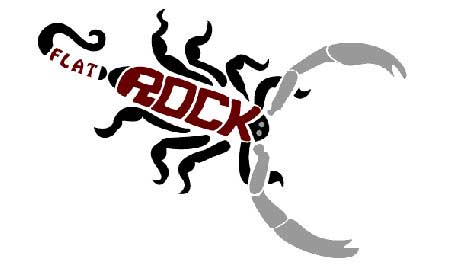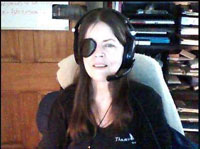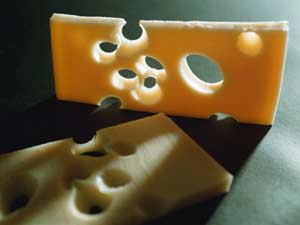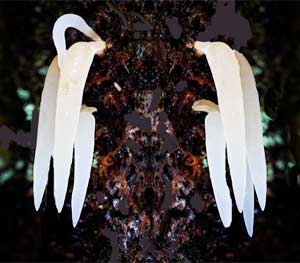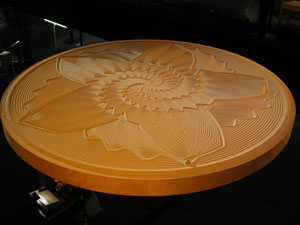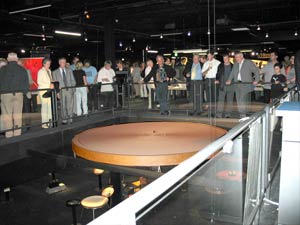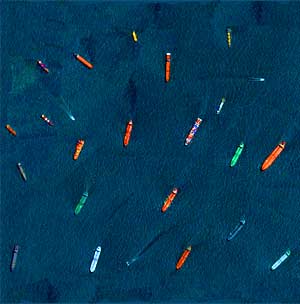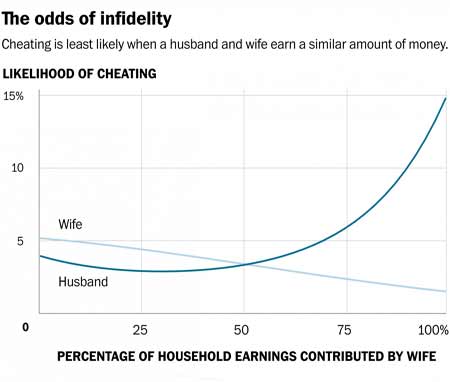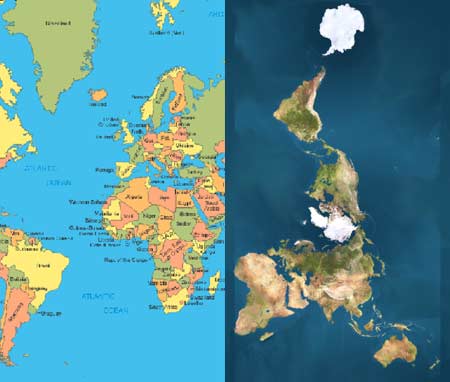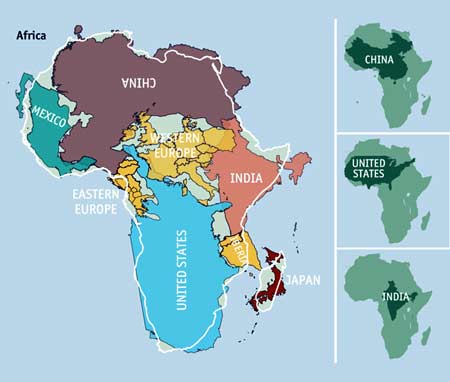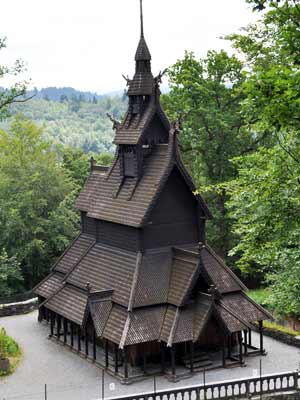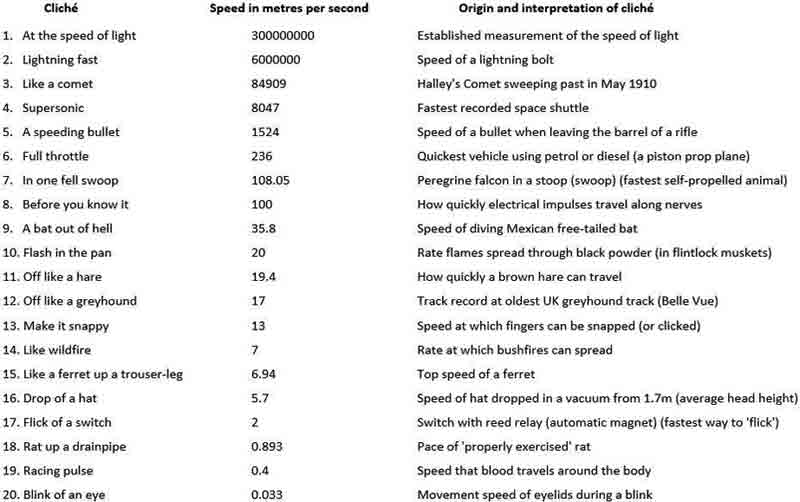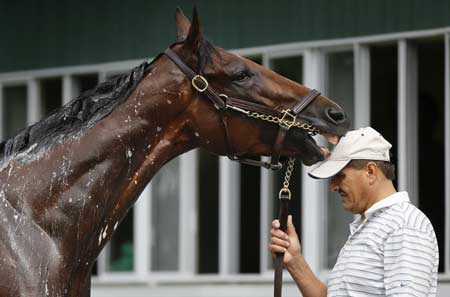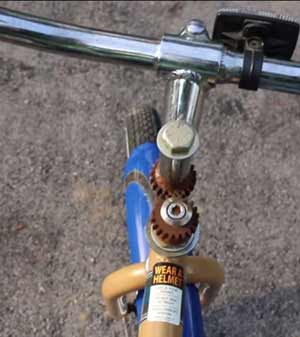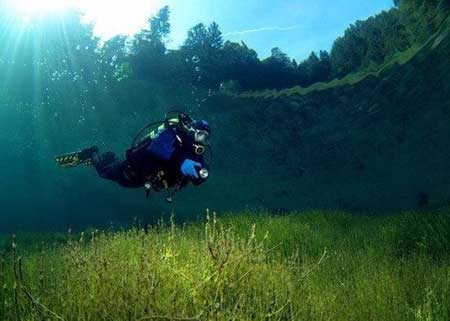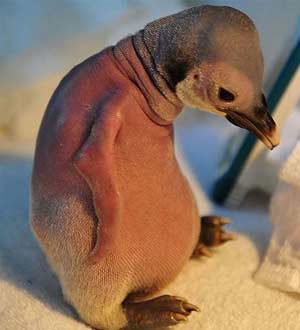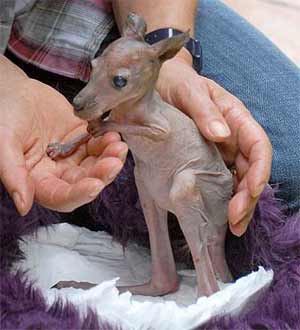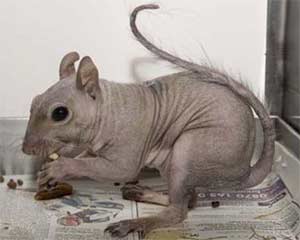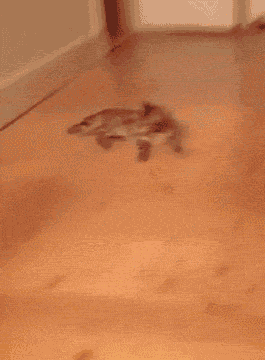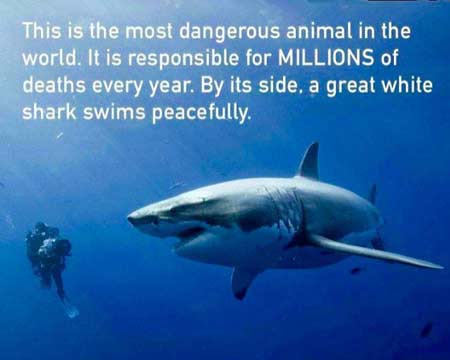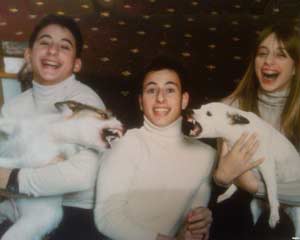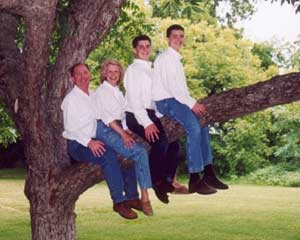The actual rock is the little dongle that hangs down into Hawke’s Bay in the right-hand middle
of this Google satellite screen grab. The forests are on the left side of the image.
Don’t give up your dreams. Keep sleeping.
—Valediction
June 30, 2015
I’ve been updating the Flat Rock website since December 1999. However, nothing lasts forever. The very last post was made to Flat Rock at the end of June 2015 — this very post as a matter of fact. As of today, this site is now dormant. (Please keep reading so I can tell you how to find my new site.)
Flat Rock was the name of the forestry trust in which my husband and I invested the bulk of our life savings for two years under New Zealand’s Business Investment Migrants’ programme so that we and our children could qualify to immigrate. We invested in pine forests — the Flat Rock Forests Trust — after all, what could go wrong? The trees were insured against random Acts of God.
However, the forests were not, we discovered, insured against deliberate Acts of Men.
Our investment vehicle was being wrapped up even before our two-year required investment period was up. Why? Because it was insolvent. Out of the $11-13 million that immigrants and others had invested, there wasn’t a single dollar left. How could that be? Being only one unitholder, the trust manager didn’t have to honour my request to see the books. Nor would he give me a copy of the unitholder list, nor could I go into their office and copy it using their copier, nor could I remove it from their office. I could, however, see the unitholder list because that was guaranteed by law. So I spent a couple of days in their office (in a very chilly atmosphere) typing each unitholder name and address into my laptop.
I figured out that the unitholders needed to band together — any powers unitholders might be granted mainly hinged on any requests presented to the Trustee coming from the majority. This website was designed to be a tool I could use to help build a unitholder community. Its original name was Flatrock Forests Unitholder Organisation and it sort-of worked as planned. (Were I an extrovert — which I’m not — it might’ve worked even better.)
The new Flat Rock website (which my son set up for me) had the name of each page written across a grove of pine trees. I wrote about each of the forests and my concerns. I added to the site random articles and photos that I ran across online hoping to entice unitholders to keep coming back to check for updates. I generally incorporated whole articles because high online storage costs at the time meant news articles that I merely linked to often rapidly became inaccessible and I wanted the site to look more professional than amateurish. There was no image search at the time, either, so if the original source for a photo I included wasn’t given, I couldn’t provide it myself. (I’m sure I broke a lot of rules, but this was my first website and I did my best.)
I kept adding topics because I didn’t know what the “average” unitholder was like so I didn’t know what he or she would find interesting. But by the time I had reached 27 topics, each multiple pages long (making the website have over 1,000 pages), I realised that I was seriously overextended. At that point I had about 10,000 visitors per day but it required me spending 40 unpaid hours per week working on the site. And I couldn’t accept ads because I was using other people’s copyrighted material on the topics pages. However, I found I rather liked having a website and appreciated that I was constantly learning something new.
The forestry trust saga had finally pretty much concluded (thanks to help from the NZ Serious Fraud Office, though a conviction didn’t get our investment money back — in all, we lost a bit over $700,000). I had been updating Flat Rock for about 10 years by then. Meanwhile, we had returned to the US temporarily (it was easier to make money there where we were more knowledgeable of the culture and had larger social networks) to recoup some of our lost savings. I returned to university and got a BA in animation, hoping to work with Weta upon returning to Wellington.
For a project in my Illustrator class, I designed a new Flat Rock logo.
The scorpion is actually a flat rock scorpion, which seemed an appropriate logo due to us having recently been so badly stung.
I uploaded my new logo and, to complete the site “modernisation”, I paged through the whole thing, getting rid of any dead links I could find and omitting outdated articles. This took days and of necessity was rather cursory, but it did help some.
Just about then Microsoft decided to abandon FrontPage (which I had been using to build and update my site). My older son designed a new content management system (CMS) specifically for Flat Rock. It was only after it was up and running that I realised that while the CMS was exactly (at that time anyway) what I wanted for my home page updates that I was now focussing on, it unfortunately had the unintended consequence of removing my ability to update or change any of the existing 1,000+ pages I had spent the past 10 years working on — at least absent an expensive conversion process. But that didn’t bother me too much since I had just updated the whole site and anyway I knew that I didn’t have the time to keep all those pages current and still find interesting things to put on my new home pages. Part of me felt relieved to be rid of that huge maintenance burden for past pages and I didn’t even have to feel guilty about it because it wasn’t my fault. However, not updating those pages caused my Google page rank to deteriorate and my stats began a slow but steady decrease.
Would a more modern look help? My younger son designed the current logo — the 3-dimensional scorpion — along with several other improvements. But a page-through of the older part showed me that rot was beginning to set in. The roll-overs no longer worked. One of the swf files wouldn’t load. A few images seemed to be missing. Many external links had died. My position on some of the things about which I had written had changed. Some layouts didn’t resize gracefully (and lots more stuff like that). My stats were still dropping as more people stopped being directed to the Topics pages. The “About” page no longer matched the new part’s format. But I do have to say that the emails I was receiving about the site were beginning to be of a notably higher quality. All in all, it still seemed worth the effort.
My older son suggested I might wish to change my format — rather than briefly summarising larger articles on many different topics, he thought I should try researching a single topic and write my own article, coming to my own conclusion. I learned much more about the subjects of my posts by doing it that way and often reached a very different conclusion than I had expected to reach when starting out. But I was never sure at what level I should be writing — was I explaining a topic to people who knew little or nothing about the subject or to people who already knew quite a lot? I’m a generalist myself, not a specialist. With the shorter posts that I had been doing, that had been to my advantage. But with the longer posts that was often not the case.
Ultimately, I didn’t feel like I was able to keep improving, and that bothered me.
So, I’m making two immediate changes. The first is that I’m leaving Flat Rock (with all its accumulated baggage) behind. The site will stay up because there are a lot of inward links that I’ve accumulated over the years (several from Wikipedia). The second is that I’m moving to a blog format (possibly Craft). There are changes I definitely would need to have someone make to my current CMS — however, my son works long hours and I don’t want to add to his work burden to make those changes. Moreover, a blog format will allow me to make smaller posts multiple times a week and will give me the ability to get feedback from readers. That will subsequently allow me to make content adjustments based on something other than wild guesswork.
This is probably nothing I’ll use on the site, but it’s the start I’ve made thus far.
The new site won’t be up for a couple of months, but for future reference:
| Website: | 25.Jessie.St | |
| Email: | ruth@25.Jessie.St | |
| Skype: | Ruth.25.Jessie.St | |
| Twitter: | @25JessieSt |
Skype wouldn’t let me start a user name with a number and Twitter wouldn’t allow me to use periods, so my tentative home page logo is already obsolete, but such is life.
I’ll send out notices to those people on my contact list, so if you aren’t on my list but are interested to know when the new site is operational, click on the email link above or the one at the bottom of this page and I’ll ping you when the time comes. Meanwhile, if a few of you give me constructive criticism for next time so that I can do a better job, that would be lovely.
I’ve really enjoyed producing this site and have really benefitted in many ways. I sincerely thank each and every one of you.
Warm regards,
The Distillery
The best argument against democracy is a 5-minute conversation with the average voter.
Winston Churchill
Learning New Things
- Imagine trying to represent a value of 105,350 miles on an odometer that has a maximum value of 99,999. The counter would roll over to 00,000 and then count up to 5,350, the remaining value. This is the same species of inaccuracy that doomed the 1996 Ariane 5 launch (with a loss of $370 million worth of equipment). More technically, it’s called “integer overflow”, essentially meaning that numbers are too big to be stored in a 32-bit computer system, and sometimes this can cause malfunction. It’s suspected that the reason why NASA lost contact with the Deep Impact space probe in 2013 was an integer limit being reached. And just last week it was reported that Boeing 787 aircraft may suffer from a similar issue. The control unit managing the delivery of power to the plane’s engines will automatically enter a failsafe mode — and shut down the engines — if it’s been left on for over 248 days. Hypothetically, the engines could suddenly halt even in mid-flight. 248 days (when counted in 100ths of a second) is equal to the number 2,147,483,647 — the maximum positive value that can be stored by a 32-bit signed register, commonly installed on many computer systems. The latest time that can be represented in Unix’s signed 32-bit integer time format is 03:14:07 UTC on Tuesday, 19 January 2038 (2,147,483,647 seconds after 1 January 1970). Times beyond that will wrap around and be stored internally as a negative number, which these systems will interpret as having occurred on 13 December 1901 rather than 19 January 2038. The counter runs out of usable bits, increments the sign bit instead, and reports a maximally negative number, then continues to count up toward zero. Resulting erroneous calculations are likely to cause problems for communications devices, including cell phones and Internet appliances (routers, wireless access points, et cetera), and others.
- The chance of a DNA match between two unrelated individuals is 1 in a billion and for siblings 1 in 10,000. Prosecution has often been dropped in cases largely reliant on DNA evidence when the suspect is an identical twin because the risk of convicting the wrong twin is too great. But as twins age, their genes diverge in the way they are turned off and on (via methylation). Researchers have now devised ways to compare this because these differences mean the genes develop different melting points — thus it can be determined which twin is which via DNA. The process isn’t perfect — young twins with similar environments may not have developed significant differences in their DNA methylation. The technique also requires a large genetic sample, which may not be recoverable at every crime scene. Other techniques for identical twin DNA differentiation exist — the DNA sequences can be analysed for mutations and compared against each other, but this process is time-consuming and expensive.
- It is now known that tiny specks of hay have always been responsible for the famous holes in cheeses like Emmentaler or Appenzeller. As milk matures into cheese these microscopically small hay particles help create the holes in the traditional Swiss cheese varieties due to the unique bacteria whose fermenting gives them their flavour. But the transition from age-old milking methods in barns to fully-automated, industrial milking systems has been causing holes to decline during the past 15 years or so because there are now fewer (or even no) hay particles floating around the barns.
Fungus Is Among Us
- Mycelium is the vegetative part of a fungus. Fungal colonies composed of mycelium are found in and on soil and many other substrates. Here, this fungus is growing on a log. A 2,400-acre (9.7 square kilometre) site in eastern Oregon once had a contiguous growth of mycelium — but logging roads were eventually cut through it. Estimated at 1,665 football fields in size and 2,200 years old, this one fungus had killed the forest above it several times over, but in so doing had built deeper soil layers that allowed the growth of ever-larger stands of trees. (It was only a matter of time before loggers noticed.)
- Leucocoprinus fragilissimus is a species of gilled mushroom. It lives on very decayed plant matter (humus or compost), growing solitarily or sparsely in wooded areas. The species is found in southern North America, South America, southern Europe, Africa, southern and eastern Asia, Australia, and New Zealand.
- Mycena chlorophos is a fungus is found in subtropical Asia, including Japan, Taiwan, Polynesia, Java, Sri Lanka, Australia, and Brazil. The mushrooms are bioluminescent and emit pale green light. In daylight they look a normal white. (It eventuates that several mushroom species are able to biolumenesce.)
- The clavarioid fungi are a group of fungi typically having erect simple (or even branched) fruit bodies that are formed on the ground, on decaying vegetation, or on dead wood. (They’re colloquially called club fungi or coral fungi.) They can sometimes be shaped like forks, worms, or clubs. They’re rubbery and sometimes brightly coloured. Although they aren’t poisonous, some kinds are a powerful laxative. They have a worldwide distribution.
- Mucronella pendula are fungi that resemble awl-shaped teeth; they grow in groups and lack a common supporting layer of mycelium. They’re found in the wet forests of southern Australia.
- Entoloma Hochstetteri is a species of mushroom found in New Zealand and India. This small mushroom is a distinctive all-blue colour, while its gills have a slight reddish tint from spores. It’s found among moss or leaf litter. This particular one was found growing near Fox Glacier on NZ’s South Island.
Red Skies at Night
- Taken from the Otago Peninsula in Dunedin, South Island, New Zealand. This shows the Magellanic Clouds and Milky Way, easily seen when the sky is clear.
- I was returning from the grocery store recently when I realised that the sky was no longer blue but pink and purple. Pedestrians around me had mostly all stopped to stare open-mouthed at the unusual and beautiful sky. I must say this was one of the most beautiful evening skies I remember ever seeing and I’m glad I was outside at just the right time. By the time I got home, it was mostly all gone. More photos here.
- This view of the Aurora Australis has multiple vertical lines of beams and a huge red proton arc. It contains more red in the higher atmosphere compared to more purples and greens usually seen in the Aurora Borealis in the northern hemisphere.
Ahead of Its Time
A full GE Refrigeration Centre combines a refrigerator-freezer (normally intended to hang on the wall above a kitchen countertop) with 2 refrigerated base cabinets and even tucks in two Cabinettes (presumably the part between the upper refrigerator and the lower base cabinets). It comes with a worktop that can be made to match that in the rest of your kitchen (in this instance, apparently green marble). This is from the late 1950s). I’m surprised this wasn’t more popular — possibly (much like the Journada) a great idea but just too far ahead of its time. (Or perhaps it never came in any colour but pink? Or maybe the back of the upper shelves was too difficult to reach?) The refrigeration units are in the enclosed parts on the very top. Personally, I’d love to have one. (I think Electrolux eventually bought out GE’s appliance division.) Many of the the Refrigeration Centres made are still operational today.
Polonnaruwa
The royal ancient city of the Kingdom of Polonnaruwa (a World Heritage Site) is a part of the main town of Polonnaruwa District in North Central Province, Sri Lanka. The second-most ancient of Sri Lanka’s kingdoms, Polonnaruwa was first declared the capital city by King Vijayabahu I, who defeated Chola invaders in 1070 to reunite the country once more under a local leader. Irrigation systems were constructed which to this day supply the water necessary for paddy cultivation during the scorching dry season in the east of the country. The greatest of these systems is the Parakrama Samudra, of such a width that standing upon the shore one can’t view the other side. The Parakrama Samudra also encircles the main city with a ribbon of water, serving as both a moat against intruders and as a lifeline for the people in times of peace. Another draw for tourists is the city’s population of toque macaques. These monkeys have been living in the ruins since human occupation ceased.
Where Art Meets Science
"Motion Control" is an industry term for computer-controlled movement in applications like robotics and CNC. A physician in northern California combines motion control with eggs and sand to create objects of intricate beauty. Artist Bruce Shapiro also uses bubbles (in a project called Pipedreams) that are produced by a high-resolution embolograph and also long strips of fabric (a kinetic ribbon sculpture modelled on ribbon dancers) to demonstrate a very modern idea of art. (This is a brief overview video) and these are some of the machines he uses, while this is a fascinating time-lapse video.
- Eggbot is an art robot that draws complicated patterns on eggs. Created in 1990, it’s now an open source project from Evil Mad Science. Eggbot participated in the 137th annual White House Easter Egg Roll, 6 April 2015.
- Sisyphus is an intricate zen sand drawing machine. For the crime of cheating death, Sisyphus had to push his boulder up the mountain only to have it roll back down each day for all eternity. (I guess that means he’s out there somewhere still doing it?) The Sisyphus machine constantly draws its ephemeral patterns in sand.
Dealing with Traffic
- Sheriffhall Roundabout is the only junction on the trunk road A720 Edinburgh City Bypass which is not grade separated. This at-grade roundabout leads to significant localised queuing, especially during morning and evening peak periods. The area is underlain by numerous historical mine workings, and a geological fault underlies the roundabout. Although there’s no longer deep mining activity in the area, potentially significant issues with ground conditions remain to be investigated, with mineral seams, fault zones and mine shafts all potential problems. The 6-arm roundabout has undergone various improvements, including localised widening, the provision of additional lanes, and signalisation to try to alleviate the delays and long queues. 8 more fixes have been proposed with interesting diagrams shown of the top 4. Nevertheless, fixes actually selected include lane widening on the roundabout and its approach roads, installing new traffic signals, introducing real-time traffic monitoring equipment (IRS2 intelligent hardwired road studs to keep traffic in the proper lanes), resurfacing, erecting new high mast street lighting, and improving safety barriers (in other words, more of the same). Further improvements are complex and haven’t been announced.
- Cargo ships and tankers (some weighing up to 300,000 tons) wait outside the entry to the Port of Singapore. The facility is the world’s 2nd-busiest port in terms of total tonnage, shipping a 5th of the world’s cargo containers and half of the world’s annual supply of crude oil. This is the port on Google Maps.
- A whirlpool interchange, constructed beginning in 2006, connects 3 major roads by the Miracle Garden in Dubai, UAE. This photography series is inspired by what is known as the “overview effect”, the sensation that astronauts experience when they view the earth from space. The dots in the photo are, I assume, fairly young trees that (if they live) will one day be appreciated in such a hot place. This is the interchange on Google Maps.
Gambling, Cheating, and Misrepresentation: Another Normal Day
- Did you lose this month’s rent in a casino? Did your “sure-thing” horse stumble? Casinos and bookies take in plenty of cash, but Western losers may not be as commonplace as the losers themselves would like to think. Americans and Brits lag not merely Australia and Hong Kong, but also Scandinavia and Finland. However Macau and Monaco, which derive their gambling revenue from tourists, don’t even make the list. Three years ago Singapore had no casinos; today they far outgross the entire Las Vegas Strip. And Western-style hotel-casino complexes are now being built in Vietnam and the Philippines. Developers salivate at the prospect of markets opening in India and Japan. Singapore has had a lucky run, but, as every serious gambler knows, lucky runs don’t last.
- A University of Connecticut study of 2,757 married Americans between the ages of 18 and 32 finds that many couples attempt to restore relationship equality through infidelity — with the compensatory cheating behaviour balancing out the spousal income separation and feelings of inadequacy. Men who are completely financially dependent on their spouse are the most likely to cheat, with their likeliness of cheating decreasing until they bring home 70% of the couple’s income. Above 70%, men become increasingly less likely to cheat. Men were also more likely to cheat if they made significantly more than their spouses, while women who made a lot more than their husbands were less likely to be unfaithful to keep a potentially strained relationship intact and neutralise “gender deviance.” In general, the couples with the least infidelity were those in which both partners were earning the same amount. On the whole, about 9% of wives and 12% of husbands engaged in extramarital sex.
- On the left is the Mercator Projection (the cylindrical mapping style you see 99% of the time from the Flemish geographer and cartographer Gerardus Mercator). In it you can see that Africa (the 2nd largest continent in the world and home to more than a billion people) is about the same size as Greenland. In reality, Africa is actually 14 times larger. The map, useful because it depicts a line of constant bearing as a straight line, is handy for marine navigation but it distorts the shapes and areas of large land masses. On the right is the Dymaxion (a portmanteau of “dynamic maximum tension”) Map Projection designed by Buckminster Fuller. It unwraps the globe, thus showing the land masses in actual proportion. (It’s not useful for navigation, however.) This animated gif shows how the Dymaxion Projection can be folded into a globe.
- This map depicts Africa and comparison countries using the Gall’s Stereographic Cylindrical Projection (1855) with two standard parallels at 45°N and 45°S. Distortions are still evident at the poles, but for most countries shape is maintained, and their areas are shown correctly. But for a really nifty explanation of the situation, see this excerpt from “The West Wing” Season 2 Episode 16.
Noteworthy Structures
- With a deep thatched roof, turreted chimney stacks, Gothic arched windows and its own natural spring (a wheel pumps water into a holding tank, then into a garden pond when the tank is full), this Grade I listed building is the epitome of a fairytale cottage. (Grade I buildings are of exceptional interest. Just 2.5% of listed buildings are Grade I.) This 18th century home (built in 1760), is called The Convent (though it was never one); it sits atop a hill overlooking the Wiltshire estate of Stourhead with the nearest neighbour more than 2 miles away. Set within an acre of land, the 2-bedroom home (+ study and large dressing room) is entirely off-grid; there’s a system of solar panels and a generator to power it as well as a satellite dish for broadband internet and tv. And it can be yours for only £850,000.
- This church was originally built in Fortun in Sogn, a village near inner or eastern end of Sognefjord, Norway around the year 1150. In the 19th century the church was threatened by demolition, as were hundreds of other stave churches. It was bought by consul Fredrik Georg Gade and saved by moving it in pieces to Fantoft near (now in) Bergen in 1883. On 6 June 1992 the church was destroyed by arson, the first in a series of church burnings related to the early Norwegian black metal scene. Reconstruction of an exact copy of the church was promptly initiated, and completed in 1997. Outside the church stands a stone cross from Tjora in Sola.
- “Build” your own container home online with the Container Builder app available at the Container Company website. The home shown here is compact, portable, and easy. I don’t know what gaining access to the property ladder is like in other countries, but I know that in NZ first-time home buyers sometimes feel hopeless. Multiple interlocking containers can be used to construct a sturdy inexpensive home, which can often be made lovely with imagination.
Animals: Food or Friend?
- It’s called the meat paradox, the fact that we can snuggle up to some animals while sticking others on the ends of our forks. How do we manage to tread this line, lamenting horses that died in WWI on the one hand but eating cows on the other? Or reading stories about Piglet and Babe to our kids and then feeding them ham sandwiches? Meat eaters are more likely to be men and to think that cows are unlikely to experience feelings like sadness and joy. For most of us, meat production is out of sight and we’re less likely to make friends with chicken, pigs or cattle. We also have a different vocabulary for meat — we eat pork, beef, and venison instead of pigs, cows, and deer. And as many as 10 million dogs are killed for food annually in China while others keep them as treasured pets. The 4N justifications of meat consumption are:
- Necessary – “Meat provides essential nutrients”
- Natural – “Homo sapiens are natural carnivores”
- Normal – “I was raised eating meat”
- Nice – “It’s delicious”
These justifications capture the vast majority (83%–91%) that people spontaneously offer in defense of eating meat. Individuals who endorse the 4Ns tend to objectify (dementalise) animals; they also include few animals in their circle of moral concerns (presumably never having had a succession of goldfish, parakeets, turtles, gerbils, rabbits, a monkey, guinea pigs, a walking stick, and numerous cats and dogs).
- Individuals who endorse the 4Ns tend not to be motivated by ethical concerns when making food choices, are less involved in animal-welfare advocacy, less driven to restrict animal products from their diet, less proud of their animal-product decisions, tend to consume meat and animal products more frequently, and/or are highly committed to eating meat. (Please understand, this isn’t meant to be an indictment but an explanation.) Omnivores who strongly endorsed the 4Ns experience less guilt. If human flesh were known to be inordinately delicious, would that justify eating it? Would eating it be easier if it were wrapped in plastic at the supermarket, we didn’t know who it was, and we knew the source was not from people raised and slaughtered for their flesh, but from executed prisoners? Necessity changes things, but that isn’t something that’s necessary at this time.
- American Pharoah (who’s name was accidentally misspelled when he was registered) has become the first winner of the US Triple Crown in nearly 4 decades and only the 12th in history. His closing quarter-mile time of 24.32 was actually faster than Secretariat’s. (Due to his winning record, The Jockey Club has now reserved both Pharoah and Pharaoh so another horse can’t be similarly named.) American Pharaoh is expected to be retired from racing at the end of 2015. He was bred in Kentucky by his owner, Ahmed Zayat. In August 2013, then a yearling, he was consigned for sale; though untested, his owner vowed not to accept less than $1 million, which wasn’t offered, so Zayat officially bought the horse back for the posted minimum of $300,000. Today, American Pharaoh is considered to be worth $100 million. The horse’s tail was apparently chewed off by another horse at some point, though he’s famous for being quite mellow and sweet — unusual for a horse of his calibre.
- A black Labrador heads up the line of 5 German shepherds as they sit patiently with their ears pricked, waiting for their turn to go up to the trainer and receive their food. (Their line is so orderly!) The picture is believed to have been taken in a police dog academy in China. Previous images from a dog training centre run by the Zhejiang Armed Police Force showed that queuing for dinner is a tradition for the canines there. “A good police dog needs to meet 4 requirements: good looking, big appetite, courageous and possessive,” said a Hangzhou-based police dog trainer, according to People’s Daily Online.
Imperfections
- Nikkie de Jager, a Dutch blonde-haired, blue-eyed, 21-year-old, is a drama queen when it comes to makeup. She’s now a vlogger on YouTube with her “Nikkie Tutorials” showing how to apply makeup and extolling its powerful virtues. I can’t deny that most women look better (more examples here) but it takes a surprising amount of money and time, emphasises one’s normal plainness, can cause serious skin and eye problems, and women applying makeup while driving cause 500,000 auto accidents annually in the UK alone (watch the clip to the end — it’s short).
- Once you learn to ride a bike, you never forget it — unless you learn a different way (an extra steering gear on this bike means turning the wheel to the right sends you left). Re-learn on this bike, and then regular bikes pose a problem. Procedural knowledge, or implicit knowledge is different from other kinds of knowledge (such as declarative), in that it can be directly applied to a task. For instance, the procedural knowledge one uses to solve problems is formed by doing and can’t be easily articulated by the individual, since it’s typically non-conscious. It helps to explain why people who learned to drive on the right side of the road have so much difficulty driving at first in a country (such as NZ) which uses the LEFT side. When the driver consciously thinks about driving, he’s fine, but listening to music, talking to passengers, or being tired may make him slip into automatic (procedural) mode, and he drifts to the right. Many traffic accidents involving tourists in NZ are caused for this reason.
- My son is about 6 feet 3 inches tall (193 centimetres). He tried using a standing desk, but it caused blood to pool in his feet and ankles and the doctor ordered him to return to sitting in a chair. This desk is said to take around 25% of the weight off the user’s legs. It’s an interesting idea and will be perfect for some people. In my opinion it needs a way to adjust its tilt, wheels with a brake to allow easier repositioning, the work platform to be tiltable toward the leaner with a lip so items don’t slide off, and to have an attached cup holder to keep a drink within safe, easy reach. The biggest problem with new ideas like this is that you don’t really know if they’ll work for you until after you’ve tried them for days (or sometimes even weeks). This chair is predicted to cost $275 (more with shipping). You can visit LeanChair’s Kickstarter page.
Really Dry and Really Wet
- Forecasts say India may bear the brunt of this year’s El Niño, because it may experience its driest monsoon since a major drought in 2009. For global investors, on the other hand, all the calamity could be a boon. One of the clearest predictable outcomes from El Niño is a general rise in weather extremes worldwide, especially in the tropics where most agriculture is still rain-fed and El Niño’s weather-morphing power is strongest. That tends to make for less than ideal growing conditions for the major agricultural commodities grown there (like rice, cocoa, sugar, palm oil, and coffee) leading to a possible disruption to the global food market. In India, Brazil, and Indonesia (some of the world’s most important agricultural regions) El Niño usually means drought. The typical boost in production thanks to generally good growing conditions in the USA usually isn’t enough to offset losses in other parts of the world, so a broad index of food prices tends to spike during El Niño years.
- In a swirling mass of orange on 25 March 2011, a sandstorm suddenly enveloped parts of Kuwait. The storm shut down Kuwait’s International Airport and the dust reduced visibility to less than 500 metres while in some areas, there was reportedly no visibility at all. The pressure of the sand caused some hotel windows to crack, causing them to be evacuated. The condition is due to a dusty storm kicking up a northwestern wind at a speed of well over 50 kilometres per hour. Even indoors in enclosed rooms, people needed to cover their faces with wet towels to keep from breathing in dust. Winds can reach up to 150 kilometres per hour. Dust and sand can be very disruptive for businesses in the Gulf, causing problems ranging from cancelled flights to headaches for the oil and gas industry that costs them tens of millions of dollars. And the number of sandstorms seems to be increasing, particularly in Kuwait.
- This is an eerie forest cast in thick fog, with the hazy light descending upon the foliage in the same green shade that blankets the floor in moss. It’s a beech forest that was once used in the production of charcoal within the region. Instead of clearcutting, the trees were pruned to preserve them and to maintain the integrity of the forest across generations. (The charcoal was needed for smelting iron.) Trees regrew with short trunks and dramatically long limbs that shoot outward like arms from almost every angle, adding to the ghostly feel.
- A diver is shown swimming in the Flooded Meadow, a seasonal crystal clear lake. This photograph was taken at a depth of 3 metres. Normally a park for locals, this area is transformed annually into an amazing scuba-diving destination. Every spring ice from the surrounding mountains melts, flooding the meadow with clear water 1–10 metres deep. It’s deepest in spring and early summer and dries out almost completely for the winter months.
Bald Animals
- Sadly for Oscar, her answer to “Who’s a pretty boy?” is — well — not her. Sporting only 4 plumes of feathers, Oscar the Moluccan cockatoo, who is in fact a girl, seems oblivious to her almost complete baldness. Fortunately, the 40+-year-old feather-challenged bird lives in the sunny climes of Florida (at the Humane Society of Broward County), where the temperature, at least, is forgiving. The bird has a very contagious disease known as beak and feather and was given only 6 months to live. That was more than 12 years ago. Oscar is the unofficial mascot of the shelter’s clinic where she is kept amused by the staff and volunteers. Her day begins around 7am when the cover is removed from her cage. She gets her breakfast (bird food and fresh fruits), then snacks all day on whatever other goodies the staff and volunteers share with her. Some of her favourite things are hash browns, cottage cheese with fruit, blueberry pancakes, pasta, pizza, and egg rolls, but she has a real sweet tooth and loves lollipops. (Video of Oscar doing a Mick Jagger imitation.)
- A bird of no feathers flocks alone: A featherless penguin born August 2011 was abandoned by its parents just days after its birth. A keeper at the LHT Pole Aquarium in China said: “Its parents left it on the icy ground to let it die.” Keepers at the aquarium decided that the sad baby penguin’s lack of feathers and weak condition were due to difficulties digesting food and absorbing nutrition. Keepers set up a penguin group to care for the youngster around the clock. After a month of hand-feeding, the little penguin was much stronger and, to the delight of the keepers, even grew feathers. It was then successfully reintroduced to its family group. Strangely, featherless penguins have been popping up on both sides of the Atlantic Ocean in the last few years. So far the possible culprits include pathogens, thyroid problems, nutrient imbalances, or genetic disorders. African and Magellanic penguins are close relatives. On both continents, scientists have found that chicks with feather-loss disorder grow more slowly than their downy counterparts. Eventually, the chicks that survive grow new feathers.
- This tiny frail looking creature was abandoned by her mother at the Serengeti-Park, Hodenhagen, in Germany. She was a surprise addition to the zoo after she was discovered lying in the grass in the kangaroo enclosure — no one had known that her mum, Urmel, was even pregnant. Her mother escaped the zoo shortly after giving birth and rejected the baby after being returned to her enclosure. The hairless joey was cared for by keepers, constantly carried close to someone’s body or wrapped in a blanket to keep warm. The animals don’t develop hair until later in life as they’d normally not emerge from the mother’s pouch. As near as I could determine, the zoo no longer seems to have any kangaroos, so it’s unclear whether or not Sabrina survived to adulthood.
- Bald squirrels are not that uncommon but the hair loss is usually because the animal is suffering from mange, an illness caused by mites. But vets at St Tiggywinkles, who have nicknamed their new patient Smoothie, have no idea why he’s bald, apart from a few tufts of fur on his tail. In the meantime, the hairless rodent is being kept warm and dry and fed on pecan nuts as further tests are carried out. Squirrels use their tails for balance, so unless his hair returns, he’ll be at a serious disadvantahe in the wild.
- A woman in central Ontario, Canada found a very strange-looking animal in her shed, huddled in a corner, and wondered what it was and what she should do about it. It was bald except for its face, and with ears that appeared bigger than a raccoon’s. She was very concerned that it wouldn’t be able to survive the harsh winter but didn’t want to approach the strange, hissing animal. It proved to be a bald raccoon. She bought a live trap to catch it, and the Aspen Valley Wildlife Sanctuary gave it a home. Staff named the raccoon Gizmo, and he is now warm inside the barn where he doesn’t have to worry about freezing or starvation. The cause of his bald state remains unknown.
- This photo is variously labelled online as being Guru and Ashes. They have different ages and life histories, but both are said to be resident at the Mysore Zoo in India, though neither one seems to live there now. Since the photographer who took this particular photo says the chimp was named Ashes, I’m going with that one. Ashes is a young adult chimp that was born with fur like any other chimpanzee. But by just a year old, he had lost all of it, leaving a good opportunity to see a chimp’s musculature. Ashes isn’t the only one of his rare kind as another hairless chimp named Cinder (now deceased) lived at the Saint Louis Zoo in Missouri. Also born with full hair, she soon lost it but was still readily accepted by the other chimps. Both animals suffer from alopecia universalis, which is also found among humans. Jambo, a 33-year-old chimp at the Twycross Zoo in Leicestershire also has the condition (and perhaps so does a chimp at the same zoo named Mongo — chimp details seem to be a bit obsscure online).
- Dolores has lost all her body hair and has just been left with a few tufts around her head. Zoo vets are baffled by the condition of the bespectacled bear, who lives at a zoo in Leipzig. The sudden hair loss affected all female bespectacled bears at the zoo. Some experts believe it could be due to a genetic defect though the animals don’t seem to be suffering from any other affliction. The bears originate from South America where they normally have fluffy dark brown fur that grows thicker going into winter to keep them warm.
- This is a hooded hairless rat. Hairless rats are a coat variety characterised by varying levels of hair loss. Hairless rats, bred from curly-coated rexes, range from having areas of very short fur to being completely bare. Hairless rats are genetically produced by breeding different combinations of the genes that cause Rex coats. Since rex is a dominant trait, there only needs to be one rex parent to produce curly rex-coated offspring. However, when 3 copies of the trait are present by breeding 3 rexes together, the coat is affected differently — causing hairlessness and earning the colloquial name, “double-rex”. One subset of semi-hairless rats, Patchwork rats, constantly lose hair and regrow it in different “patches” several times throughout their lives.
- A wild female bald baboon was spotted in Kariba, Zimbabwe. The rare bald female was spotted by Ann Warner while she explored the countryside of her adopted home of Zimbabwe with a group of friends. Baboons are found throughout central and southern Africa, living in troops of up to 250 individuals. They’re not endangered, although as their forest and plains habitat has been developed by humans they’ve come into conflict with people more frequently. Monkeys and apes sometimes lose their hair in rare cases of alopecia just like humans do, although because this hairless female was spotted in the wild, the cause of her baldness is unknown.
And Now for Something Completely Different
- A plane performs in front of the Christ the Redeemer statue on Corcovado hill, in Rio de Janeiro, 19 April 2007.
- All they really needed to include was through the job ID. And this was in 2013? Hard to believe. (Click image for a larger, more-readable version — if it matters.)
- Do sadistic parents enjoy seeing their kids frightened? This seems like a ridiculous tradition.
Family Photos
- There’s way too much sharing of skin and visceral fat in this photo. Mom apparently removed her shirt to show off her new bra. And Dad is chopping off his daughter’s breasts. (So she’ll stop growing and be his little girl forever? Or maybe he just misunderstood what “cleavage” means.)
- “My parents had some photographer come over to shoot us kids. The photographer thought it would be a cute idea to get a group shot of me and my siblings on the staircase with our adorable pups. Little did he know that they go crazy when they make eye contact with each other. Well, they did just that. My siblings and I expected this behaviour so we just laughed, showcasing our amazing orthodontics.” The dogs’ names, he said, were Rex and Roxy (a pair with dominance issues). They’re both Jack Russell terriers. The framed photo still hangs in his parents’ house.
- Nothing says happy holidays like the denim-clad Goldsteins vertical-spooning one another. I wonder: Who thought this pose was a good idea? This photo was posted 23 April 2009 but I could find nothing about the family, though the photo has made the Awkward Family Photos Hall of Fame. (Click on the photo to see what this photo almost certainly inspired more than 5 years later on 10 December 2014.)
 Animals
Animals Animation
Animation Art of Playing Cards
Art of Playing Cards Drugs
Drugs Education
Education Environment
Environment Flying
Flying History
History Humour
Humour Immigration
Immigration Info/Tech
Info/Tech Intellectual/Entertaining
Intellectual/Entertaining Lifestyles
Lifestyles Men
Men Money/Politics/Law
Money/Politics/Law New Jersey
New Jersey Odds and Oddities
Odds and Oddities Older & Under
Older & Under Photography
Photography Prisons
Prisons Relationships
Relationships Science
Science Social/Cultural
Social/Cultural Terrorism
Terrorism Wellington
Wellington Working
Working Zero Return Investment
Zero Return Investment

